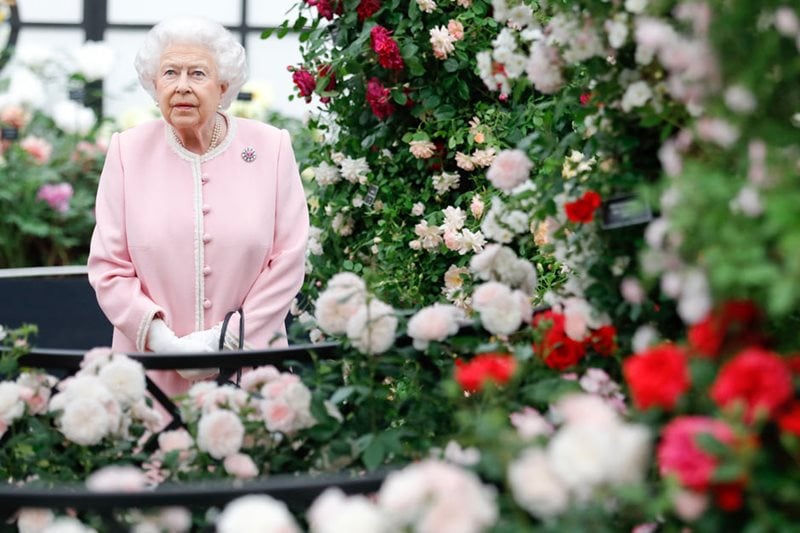
“Plants, trees and flowers have been
a source of pleasure throughout my life.”
Her Majesty The Queen 1926–2022
Her Majesty Queen Elizabeth was the Patron of the Royal Horticultural Society for one-third of its history. Descended from a line of keen gardeners and with a strong appreciation of beautiful gardens and landscapes, The Queen was a regular visitor to RHS Chelsea Flower Show (pictured above at the 2018 show admiring the displays).
At RHS Chelsea Flower Show
Very early in The Queen’s reign in May 1952, a matter of months after her accession, Her Majesty attended RHS Chelsea Flower Show, the first of more than 50 visits as monarch. On her last visit in May 2022, she was chauffeured around the show in a golf buggy.
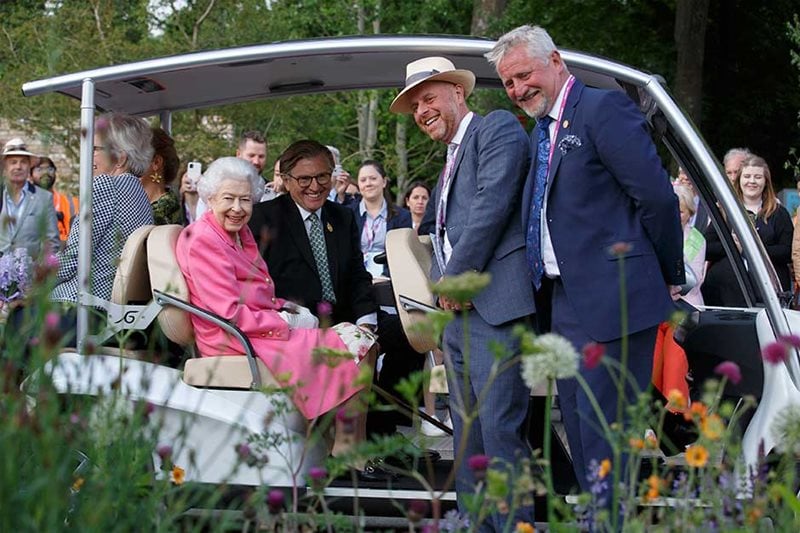
(pictured: The Queen, RHS President Keith Weed, television presenter Joe Swift and landscape architect Mark Gregory).
“They’re giving me a lift,”
she was heard to quip to a friend.
As always, The Queen was interested, informed and animated. She greeted long-standing exhibitors by name and brought joy to all those she met.
Attendance at Chelsea had always been a cherished family event for the royals, a tradition beloved by The Queen’s great grandmother Queen Alexandra and enjoyed by her grandparents King George V and Queen Mary. As Princess Elizabeth, she attended the first post-war show in 1947 (the first for eight years) with her parents King George VI and Queen Elizabeth, the Queen Mother, both keen gardeners at the Royal Lodge, and that love of horticulture has passed down the generations.
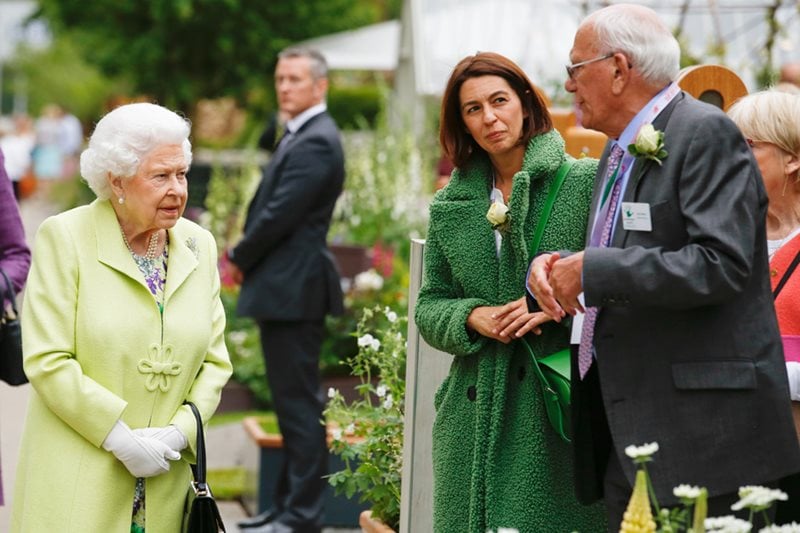
For many exhibitors, the royal visit to RHS Chelsea Flower Show ahead of the crowds, is a highlight of the event; with show gardens resplendent and floral displays perfected, each awaiting the ultimate inspection, which was always relaxed and warm. There was a quizzical eye, an intelligent question, a wry smile. She would linger at gardens created for charities close to her heart, or from countries with a strong Commonwealth connection; Kirstenbosch’s dazzling South African endemics; the exuberant Caribbean stands; the memorable Australian and New Zealand gardens.
I once heard The Queen say,
as she passed me on Main Avenue, “It’s better than ever this year.”
Family too have been involved. As Prince of Wales, King Charles III helped design two show gardens, a Carpet Garden in 2001, now at Highgrove, and a Healing Garden in 2002, packed with plants and trees with medicinal value, both of which his mother visited. In 2009, Prince Charles was awarded the RHS Victoria Medal of Honour (pictured below) for his passion for plants, sustainable gardening and the environment. More recently Prince Harry commissioned gardens promoting Sentebale, the charity he co-founded to help vulnerable children in Lesotho. The B&Q Sentebale Forget-Me-Not Garden in 2013 and the Sentebale – Hope in Vulnerability garden in 2015 both featured and the latter won the People’s Choice Award.
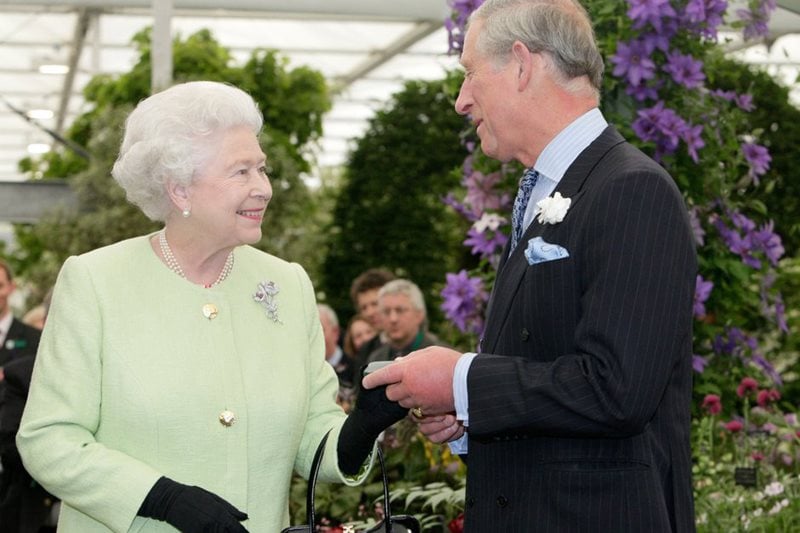
As Duchess of Cambridge, Catherine, now the Princess of Wales was co-designer of the highly imaginative, child-friendly RHS Back to Nature Garden in 2019 (pictured below: The Queen and the Prince and Princess of Wales on the garden at Chelsea), which can now be enjoyed at RHS Garden Wisley. It includes a Cedrus atlantica ‘Glauca Pendula’, which she planted in September of that year to mark the garden’s opening at Wisley.
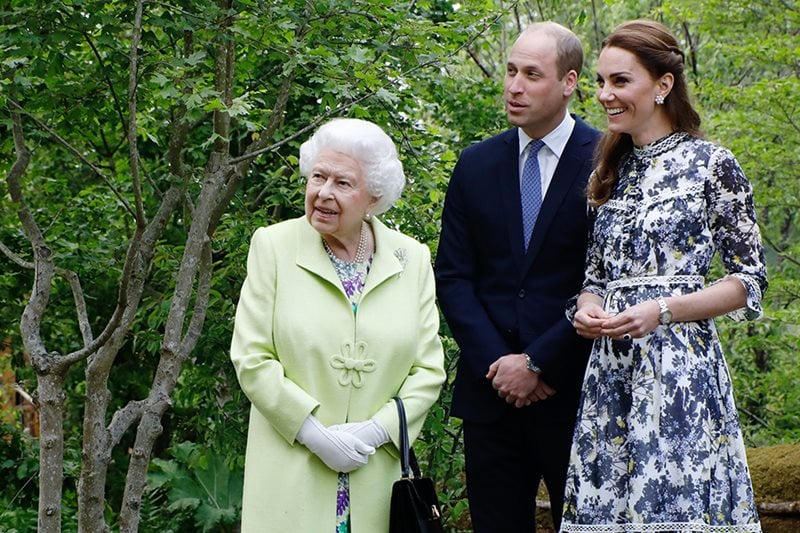 Gardening through The Queen’s reign
Gardening through The Queen’s reign
How we garden is an expression of national culture and personal style. During Queen Elizabeth’s record-breaking seven decades as sovereign, our gardens and how we use them and think about them have changed beyond recognition illustrating that horticulture really is a barometer and expression of social and environmental change.
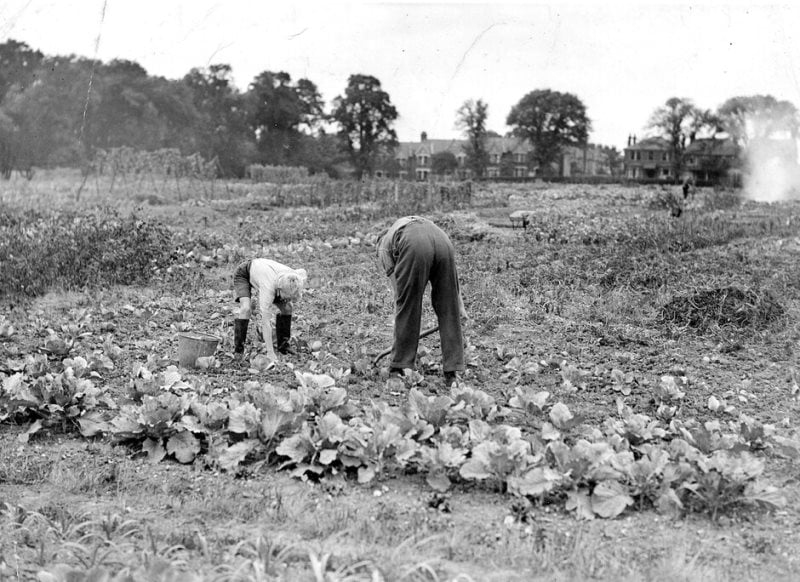
The 1950s were an era of ubiquitous rock gardens, clipped lawns and formal bedding. The years of Dig for Victory (pictured above: Valentines Park, Ilford in around 1947, Dig for Victory), when every household grew food for the table, had given way to a joyous celebration of colourful flowers, which were grown from seed or cutting and shared between friends and neighbours. The garden centre, as we know it, didn’t arrive until the 1960s and when it did, it revolutionised our opportunities to purchase trees, shrubs and flowers, beautifying our gardens quickly and easily. Today our gardens are key to promoting biodiversity and homes for wildlife, as well as places for us to work, rest and play.
During her remarkable reign, many fine gardens owned by the monarch have opened to the public and these too reflect the wider evolution in horticultural fashion and practice; today they’re less formal, and more organic. His Majesty King Charles is also a great garden innovator and creator, and pioneering champion of sustainability.
Planting commemorative trees
The tradition of planting trees to mark a significant occasion is a common one. Queen Elizabeth is known to have planted more than 1,500 trees across the world, though the earliest reference I found is to a whitebeam at Britannia Royal Naval College, Dartmouth, planted, while still Princess Elizabeth on 27 July 1939, the same day Prince Philip made a dramatic first impression on the future Queen. It followed a huge programme of tree planting encouraged by the Coronation of King George VI just a few years earlier.
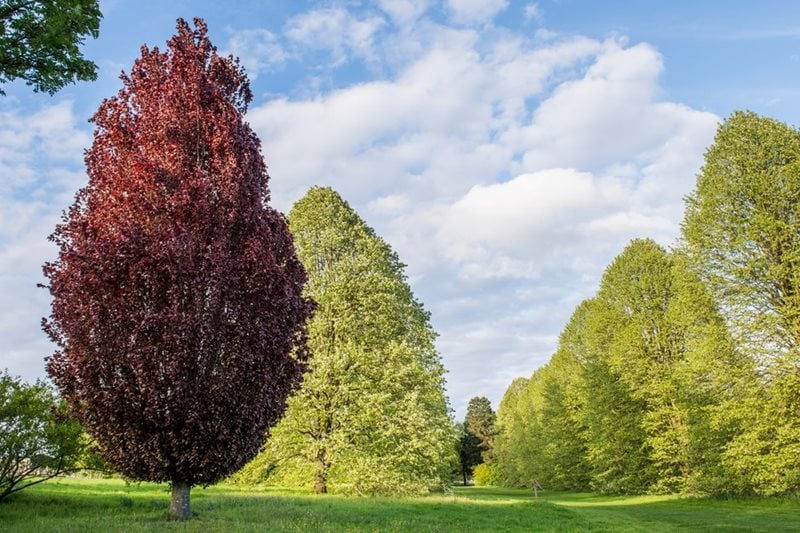
At RHS Garden Wisley I recently viewed the two beeches, Fagus sylvatica ‘Dawyck Purple’ planted by The Queen and Prince Philip in May 1978 to inaugurate the Jubilee Arboretum (pictured above), which includes nearly 1,000 trees of 90 different genera, some arranged by leaf and flower type, others grouped according to genus and species.
At the Windsor Estate office, I’ve admired the collection of silver spades used for regal tree plantings. As the most travelled Head of State in history, The Queen planted a vast range of species and varieties, and inspired the creation of gardens and arboreta culminating, this year, in The Queen’s Green Canopy and the continent-crossing Queen’s Commonwealth Canopy. It’s an astonishing investment in the future of our planet.
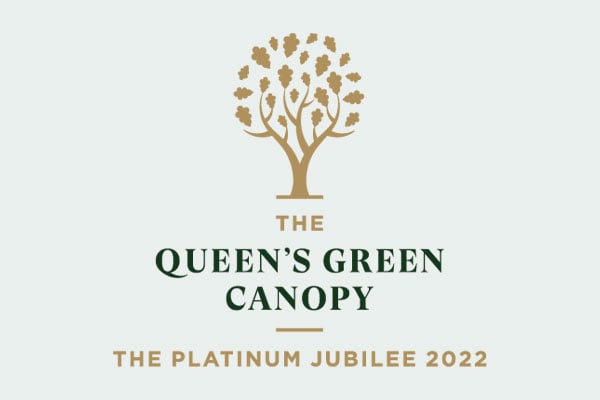
At Ranelagh Gardens, in the RHS Chelsea Flower Show showground, there’s a fine pendulous Tilia tomentosa ‘Chelsea Sentinel’ planted by The Queen in 1988 to mark 75 years of the show. In 2007, on a glorious July day, the opening of Wisley’s new Glasshouse was marked by a very relaxed royal tour. I watched the unveiling of the plaque and the planting of a splendid Cornus kousa ‘Wisley Queen’. Three years ago, on a visit to Cambridge, the plan was for The Queen to watch the planting of a tree.
But passing her handbag aside declared: “No, no, I’m still perfectly capable
of planting a tree.”
She then did, as always with the right-hand leading, the left higher up balancing the spade. As recently as last autumn she planted a copper beech at Balmoral.
The Queen as gardener
When The Queen’s reign began she was staying in a treehouse in Kenya in the brances of a giant mugumu fig tree. Seventy years on she she loved nothing more than to be at Windsor with the dogs amid the prodigious arboretum and rustic watercourses at Frogmore, near or in the Eastern Terrace Garden, which Prince Philip redesigned. Her Majesty described Frogmore as a ‘wonderfully relaxing environment’.
The Queen was a true gardener, as a good friend of mine observed at Balmoral in 1981. “I saw The Queen weeding a border. She was wearing a pleated tartan skirt and a cardigan and was wrestling with some deep-rooted weeds bent low over the border; she seemed completely absorbed in the task.”
Typically modest: “I’m not any sort of expert on gardening but plants, trees and flowers have been a source of pleasure throughout my life.”
The Queen once feared Balmoral’s climate was too harsh for clematis. One year at the RHS Chelsea Flower Show she asked the world expert for advice. The climbers he provided established well, and she proudly invited that same expert back to Deeside to show them flourishing.
Her Majesty did not like variegated hostas and found fresh strawberries rather tart. At Buckingham Palace, the gardeners would provide a bouquet of cut flowers every Monday for her desk, and she would carefully put it aside for composting before the weekend.
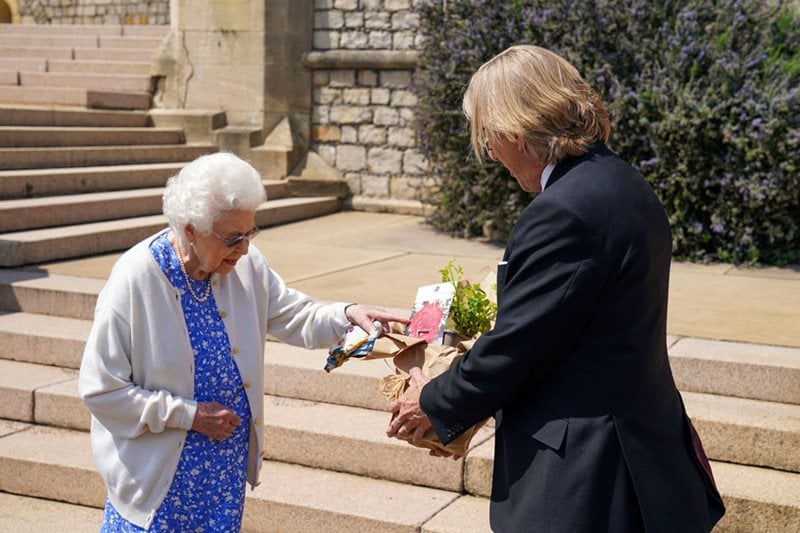 In June 2021, RHS President Keith Weed presented The Queen with a Duke of Edinburgh rose (Rosa ‘Duke of Edinburgh’), to celebrate what would have been her husband’s 100th birthday (pictured above).
In June 2021, RHS President Keith Weed presented The Queen with a Duke of Edinburgh rose (Rosa ‘Duke of Edinburgh’), to celebrate what would have been her husband’s 100th birthday (pictured above).
The Queen and the RHS
Prince Albert, The Queen’s great-great-grandfather was president of the Horticultural Society from 1858 to 1861, and at that point, Royal was added to the Society’s name. A century later, Sir David Bowes-Lyon (younger brother to The Queen Mother) was appointed RHS President from 1953 to 1961. The two are the only brother and sister to be awarded the Victoria Medal of Honour, the Society’s highest decoration.
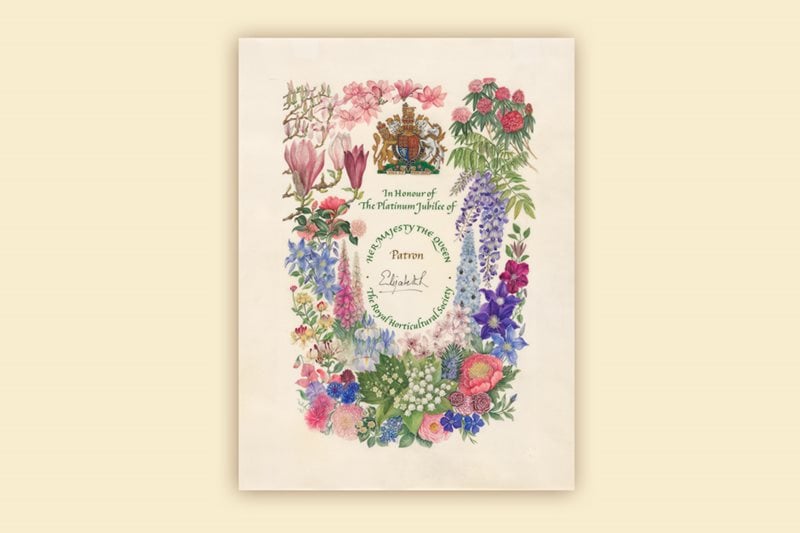 The RHS has enjoyed numerous royal visits with new buildings opened and trees planted – including Platinum Jubilee tree plantings at RHS Garden Hyde Hall and RHS Garden Bridgewater. She also contributed to our unique collection of royal autographs (pictured above: The specially commissioned 2022 botanical art and royal signature), which is to be displayed in the inaugural exhibition at RHS Garden Wisley’s restored Laboratory building.
The RHS has enjoyed numerous royal visits with new buildings opened and trees planted – including Platinum Jubilee tree plantings at RHS Garden Hyde Hall and RHS Garden Bridgewater. She also contributed to our unique collection of royal autographs (pictured above: The specially commissioned 2022 botanical art and royal signature), which is to be displayed in the inaugural exhibition at RHS Garden Wisley’s restored Laboratory building.
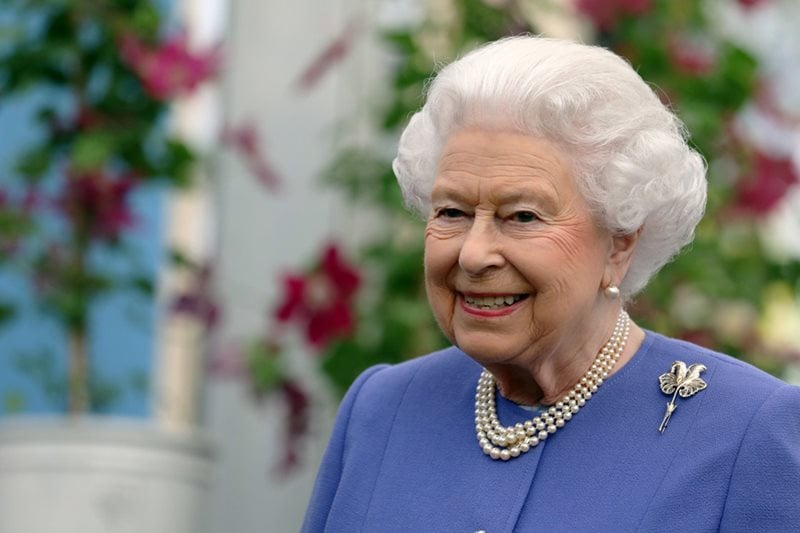
Her Majesty Queen Elizabeth II’s influence in these 70 years has been immense (if characteristically understated). She helped showcase the best of British, not necessarily as a horticultural trendsetter but she moved with the times, encouraged excellence and wider participation as well as innovative estate management, renewing avenues, and re-creating the ancient Caledonian forest.
This legacy will endure and grow for centuries.
You might also be interested in...

